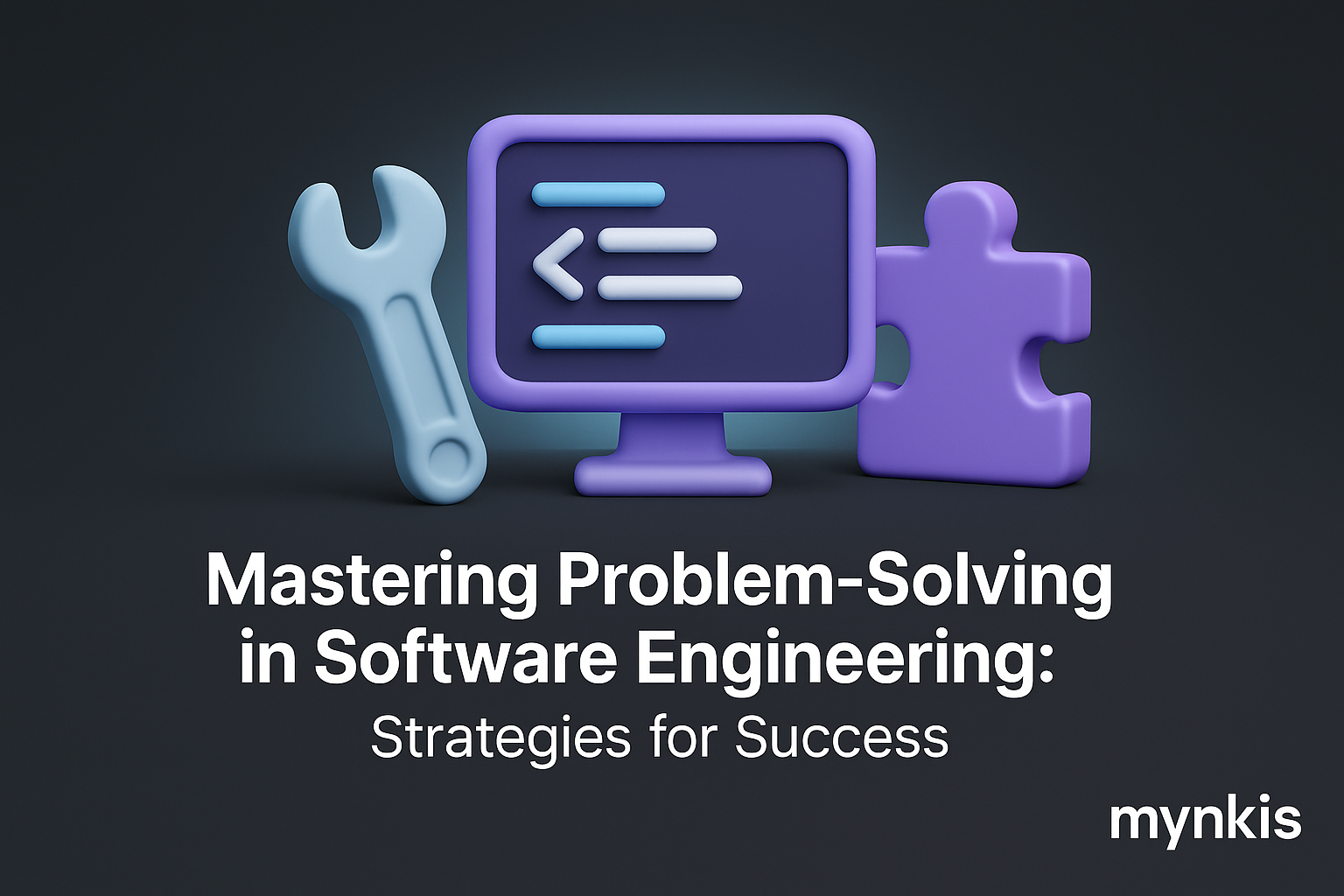Schedule a Demo
Software engineering is a field rich with challenges that demand creative and effective problem-solving skills. Whether you're tackling a complex algorithm, debugging persistent errors, or enhancing system performance, understanding how to navigate these complexities can set your projects apart. In my experience, one of the most common issues I encounter with operations managers is the need to balance development speed with robust functionality.
One of the simplest yet powerful techniques in problem-solving is the 'Five Whys' method. Originated by Taiichi Ohno, a key figure at Toyota, this approach involves asking 'why' five times to drill down to the root cause of a problem. While seemingly simple, this method encourages a deeper understanding of the issue at hand, which is essential for creating solutions that not only fix the immediate problem but prevent it from reoccurring. In software development, this might mean uncovering a deeper flaw in the design or architecture, leading to a more comprehensive solution.
When faced with a daunting software challenge, breaking the problem into smaller, more manageable pieces is often a successful strategy. This approach mirrors the divide-and-conquer algorithm widely used in computer science. By segmenting the problem, each smaller piece becomes less overwhelming and easier to address individually. This method not only simplifies the path to a solution but also aids in clearer communication among team members, something I've found extremely beneficial when collaborating on large-scale projects.
Debugging is an art as much as it is a science. It requires patience, persistence, and a systematic approach. Effective debugging techniques include reproducing the bug, using debugging tools to understand the program flow, and sometimes, rewriting parts of the code to test hypotheses about the error's origin. I've seen how a systematic approach to debugging can turn a time-consuming ordeal into an opportunity for significant improvements in both the software and the development process.
User feedback can be a goldmine of insights into potential issues within your software. Engaging with users early and often not only helps in identifying problems but also prioritizes which issues to solve first. In my work with different enterprises, I've observed that integrating user feedback loops into the development cycle dramatically improves both the product and user satisfaction.
Agile methodologies like Scrum and Kanban provide a framework that supports iterative problem-solving. By breaking down development into sprints, teams can tackle issues in manageable chunks, allowing for continuous improvement and adaptation to feedback or changes. This approach, while not a silver bullet, offers a structure that many teams find helps them to more effectively address and resolve complex software challenges.
Regular code reviews are not just about maintaining code quality but are a vital part of the problem-solving process. By reviewing each other's code, team members can spot potential issues before they become major problems. This collaborative approach to development not only improves the quality of the codebase but also fosters a culture of continuous learning and improvement within the team.
The incorporation of AI and machine learning in software development has opened new avenues for problem-solving. These technologies can help automate tasks, detect anomalies, and even suggest solutions or improvements based on patterns within the data. While not applicable to every situation, understanding and leveraging these tools can be a significant advantage in solving complex software engineering challenges.
Good documentation is often overlooked but is crucial in the problem-solving process. It not only helps in understanding the existing codebase and system architecture but also serves as a reference point for resolving issues. Based on available research, maintaining clear and comprehensive documentation can significantly reduce the time spent on solving problems. However, individual results may vary depending on the team and project specifics.
A growth mindset is essential in software engineering. It means viewing challenges as opportunities to learn rather than obstacles to overcome. This perspective encourages perseverance and openness to feedback, both of which are critical in effective problem-solving. In my experience, teams that embrace this mindset tend to be more resilient and innovative in tackling software development issues.
Failures and errors in software development are not just setbacks; they are learning opportunities. Analyzing what went wrong, understanding why it failed, and how it can be improved is a powerful problem-solving technique. Encouraging a culture that does not shy away from failures but learns from them can lead to significant advancements in both software quality and development processes.
Software development is rarely a solo endeavor. The ability to collaborate effectively with others can dramatically improve problem-solving efficiency. This might involve brainstorming sessions, pair programming, or simply maintaining open lines of communication. Collaborative environments foster a variety of perspectives that can lead to innovative solutions not easily discovered by an individual working in isolation.
Testing, especially in the form of unit tests, integration tests, and end-to-end testing, is an integral part of solving software problems. These tests help identify issues early in the development cycle, allowing for timely adjustments. Establishing a robust testing regime not only prevents bugs from going live but also builds a foundation for continuously improving the quality and reliability of the software.
In the realm of software engineering, finding the right balance between development speed and solution quality is a perpetual challenge. Rapid solutions might suffice for immediate fixes but can lead to technical debt if not carefully managed. Conversely, striving for perfection can slow down progress unnecessarily. Learning to navigate this balance is a key skill in effective software problem-solving.
The field of software engineering is in constant flux, with new technologies, languages, and methodologies emerging regularly. Staying abreast of these developments and being willing to adapt your approach to problem-solving is vital. This continuous learning not only keeps your skills sharp but also equips you with new tools and perspectives that can be applied to solve the evolving challenges of software development.
